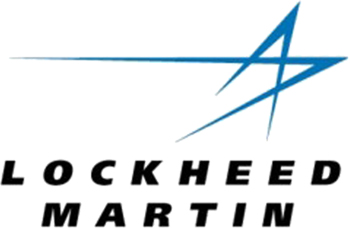Lockheed Martin Corporation

Lockheed Martin is a global security and aerospace company that employs about 112,000 people worldwide and is principally engaged in the research, design, development and manufacturing of advanced technology systems.
As a global security, aerospace, and information technology company, the majority of Lockheed Martin's business is with the U.S. Department of Defense and the U.S. federal government agencies. In fact, Lockheed Martin is the largest provider of IT services, systems integration, and training to the U.S. Government. The remaining portion of Lockheed Martin's business is comprised of international government and some commercial sales of our products, services and platforms.
Lockheed Martin's operating units are organized into broad business areas.
- Aeronautics, with approximately $14.9 billion in 2014 sales which includes tactical aircraft, airlift, and aeronautical research and development lines of business.
- Information Systems & Global Solutions (IS&GS), with approximately $7.8 billion in 2014 sales that includes C4I, federal services, government and commercial IT solutions.
- Missiles and Fire Control, with approximately $7.7 billion in 2014 sales that includes the Terminal High Altitude Area Defense System, Joint Light Tactical Vehicle, PAC-3 Missiles as some of its high-profile programs.
- Mission Systems and Training with approximately $7.1 billion in 2014 sales, which includes naval systems, platform integration, simulation and training and energy programs lines of business.
- Space Systems, with approximately $8.1 billion in 2014 sales which includes space launch, commercial satellites, government satellites, and strategic missiles lines of business.
Lockheed Martin Corporation Postings
4 technical articles »
Counterfeit Materials Prevention
Oct 04, 2022 | Lockheed Martin Corporation
Counterfeiting is growing in exponential proportions with respect to the types of: • Products being counterfeited • Industries affected • Potential consequences caused by counterfeits If this threat is not adequately addressed, counterfeit items have the potential to seriously compromise the safety and operational effectiveness of our products. The objective of this training is to raise awareness of: • The risks and impacts of counterfeit parts infiltrating the supply chain. • Best practices to eliminate or mitigate those risks • Lockheed Martin counterfeit prevention requirements for suppliers...
HALT Testing of Backward Soldered BGAs on a Military Product
Nov 19, 2015 | B. Gumpert, B. Fox, L. Woody
The move to lead free (Pb-free) electronics by the commercial industry has resulted in an increasing number of ball grid array components (BGAs) which are only available with Pb-free solder balls. The reliability of these devices is not well established when assembled using a standard tin-lead (SnPb) solder paste and reflow profile, known as a backward compatible process. Previous studies in processing mixed alloy solder joints have demonstrated the importance of using a reflow temperature high enough to achieve complete mixing of the SnPb solder paste with the Pb-free solder ball. Research has indicated that complete mixing can occur below the melting point of the Pb-free alloy and is dependent on a number of factors including solder ball composition, solder ball to solder paste ratio, and peak reflow times and temperatures. Increasing the lead content in the system enables full mixing of the solder joint with a reduced peak reflow temperature, however, previous research is conflicting regarding the effect that lead percentage has on solder joint reliability in this mixed alloy solder joint....
Tin Whisker Risk Management by Conformal Coating
Oct 22, 2015 | Linda Woody, William Fox; Lockheed Martin Missiles and Fire Control
The objective of this study is to evaluate conformal coatings for mitigation of tin whisker growth. The conformal coatings chosen for the experiment are acrylic, polyurethane and parylene. Also included in this paper are tin whisker inspection results of tin-plated braiding and wire that was exposed to an environment of 50°C with 50% relative humidity for over five years....
Solder Paste Stencil Design for Optimal QFN Yield and Reliability
Jun 11, 2015 | B. Gumpert
The use of bottom terminated components (BTC) has become widespread, specifically the use of Quad Flat No-lead (QFN) packages. The small outline and low height of this package type, improved electrical and thermal performance relative to older packaging technology, and low cost make the QFN/BTC attractive for many applications.
Over the past 15 years, the implementation of the QFN/BTC package has garnered a great amount of attention due to the assembly and inspection process challenges associated with the package. The difference in solder application parameters between the center pad and the perimeter pads complicates stencil design, and must be given special attention to balance the dissimilar requirements...






